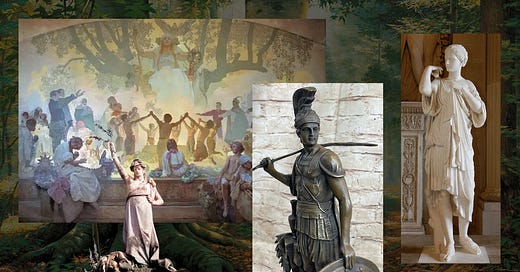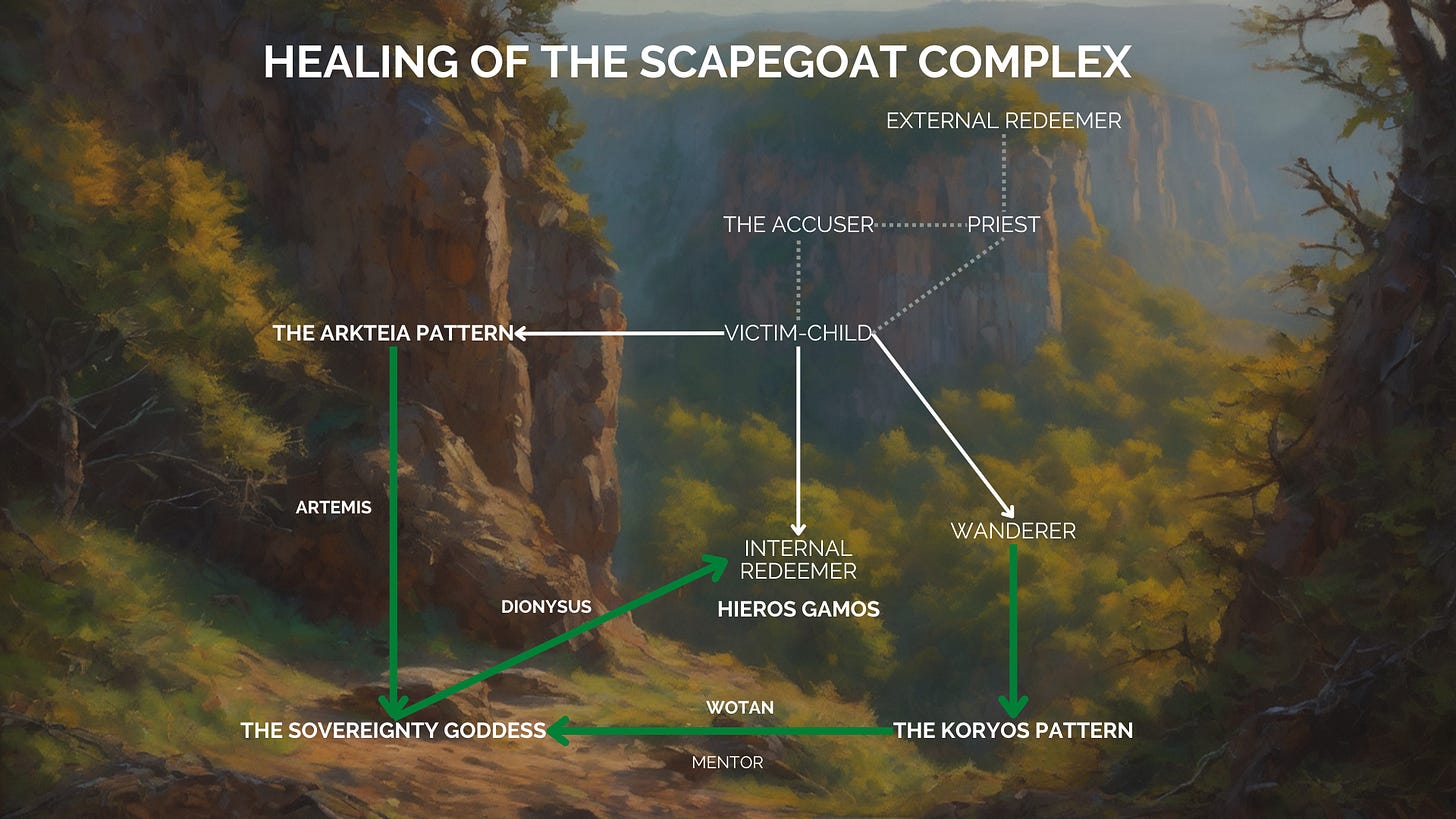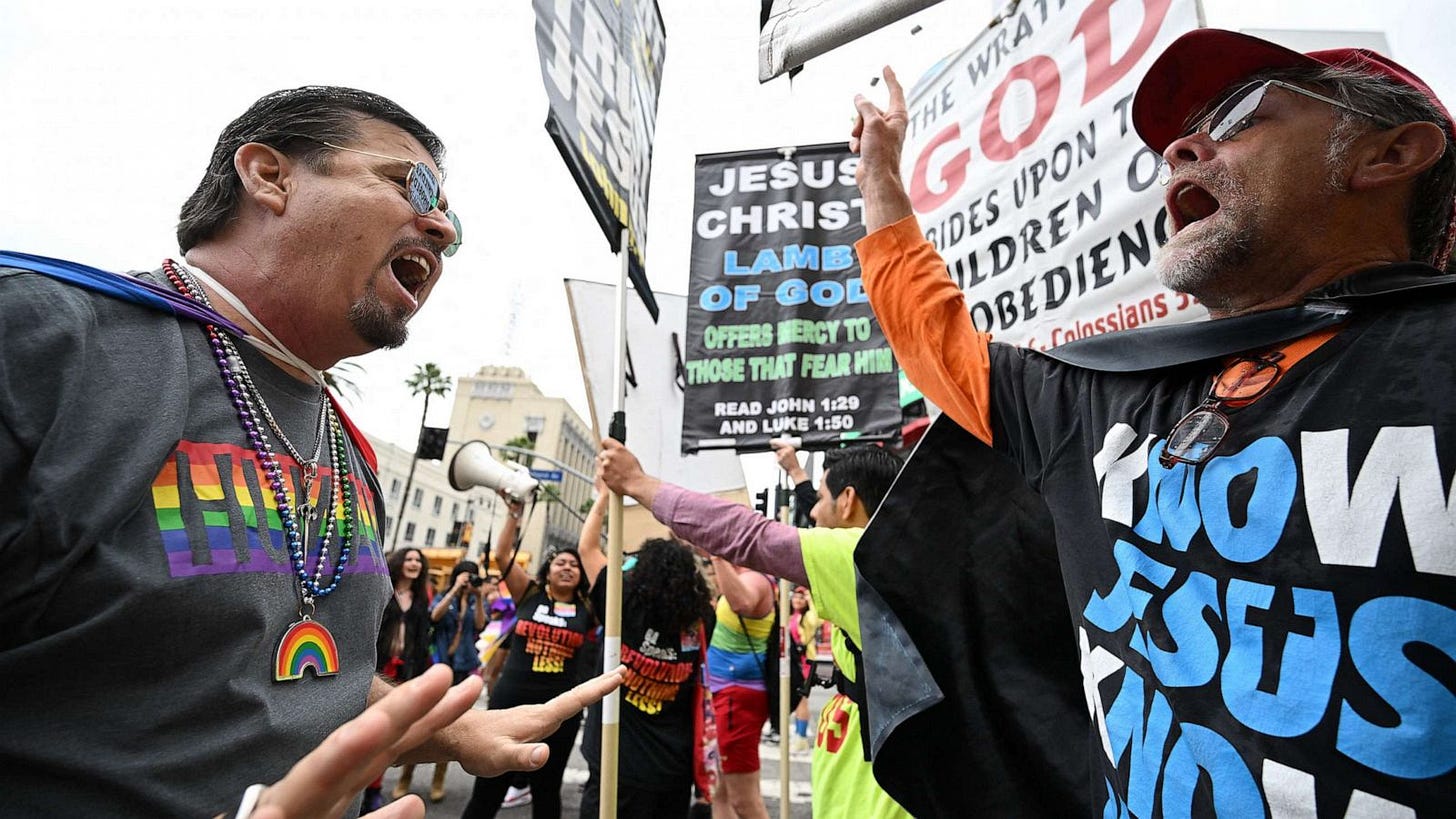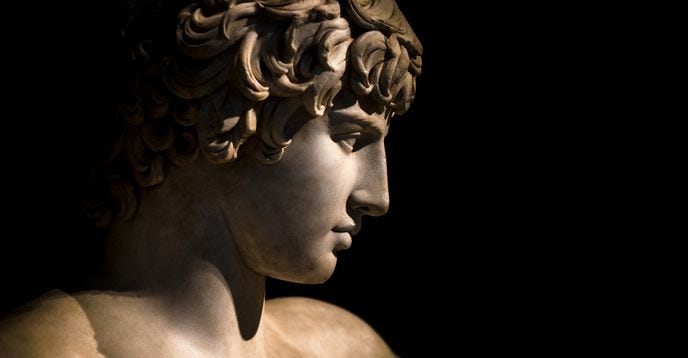Before diving deeper into the article I have to explain a few terms that I coined, as part of my ongoing research. These referring to Psychic dams, Trapped energy and Trans-archetypal pattern. Psychic dams are symbolic barriers that exist within the collective unconscious that prevent the free flow of psychological and cultural energy. These dams can be formed by societal norms, historical traumas, unresolved conflicts, or rigid archetypal structures.
The Mechanics of Trapped Psychic Energy
Trapped energy refers to the potential for growth, creativity, and healing that is hindered by these psychic dams. This trapped energy often manifests as cultural tensions, individual psychological issues, and societal conflicts. This is both energy trapped within the culture, but more importantly within individuals. Referring to what Jung called psychic energy, or Libido. Which at psychic dams are held up, and then channelled from the individual into goals that don't necessarily align with their best interest. This is something that occurs both on a personal level with complexes tied to trauma, yet these are but flavours of the more widespread cultural complexes. Which are the shared forms given to archetypes, that can split them into dual poles. Thus also leading to the demonization of for instance the Sovereignty Goddess into the figure of the witch, splitting of her nurturing side as the docile mother.
The Trans-Archetypal Lens
A "trans-archetypal pattern" finally refers to a deeper level of analysis that goes beyond individual archetypes to explore the interconnected relationships between them across different cultural and historical contexts. For example, instead of studying a single mythological figure like Wotan in isolation, a trans-archetypal approach would examine how Wotan is connected to other figures and themes, such as the Koryos pattern representing a masculine rite of passage, or his relationship with Dionysus and the Sovereignty Goddess from different mythologies. Rather than viewing archetypes in isolation, this approach emphasizes the broader patterns and themes that emerge when considering how archetypes interact and evolve over time and across cultures to discover the larger underlying pattern that connects archetypes.
The Mirror of Culture: Inner Conflicts Reflected Outward
Now when it comes to the cultural conflicts that occur within the Western psyche this is as much reflected in the psyche of every individual as much as that of the culture at large. This is because every single person, that is still unconscious of the collective unconscious patterns at play, is still unconsciously driven by them. As such these conflicts repeat in cycles, as if it where fate. Yet what they are not seeing is how they are really playing an external drama, based on an unconscious one.
Archetypes as Agents of Wholeness, Not Chaos
Now the Jungians might talk about Wotan, Dionysus and the Sovereignty Goddess as the archetypal forces driving this from the collective shadow. Yet what they do not see is that these forces are the very ones trying to drive the psyche towards wholeness. And with it to resolve the scapegoat-redeemer complex. Which traps the West in cycles of scapegoating, mass shadow projection, and logos-based (hyper-intellectual), denial of the unconscious and soul language (myth). Instead of integrating the archetypes that have been repressed, they act through people and the culture as larger cultural forces, which as shadow feeds the scapegoat-redeemer complex. Where with some it feeds the accuser aspect, with others they identify unconsciously with the victim-child, external redeemer, priest or wanderer.
Dionysus and the Scapegoat-Redeemer Complex
Archetypally these within our culture map onto Dionysus (think also Jesus on the cross) as victim-child, and eternal suffering scapegoat. Who doubles as a figure of redemption, through said suffering. As an externalised act of carrying collective trauma. Where the external redeemer also can manifest as cult guru and other grandiose saviour types, who bring order (queue another repression cycle) to the social world. Which also sometimes aligns with the priest aspect too. We can see this also lately with Trump being depicted as the Pope. Who plays both role of Accuser and Priest, next to External Redeemer. With as his enemy the “woke” who are the victim-child. Which links to Dionysus, as gender fluid being. Which is why the trans movement is also thrown under the bus. As they are a physical manifestation of the integration that people fear. They have a fear of the integration of consciousness with the unconscious, masculine with feminine, within the person.
Wotan, the Wanderer, and the Sovereignty Goddess
Finally Wotan is both a symbol of the wise old man, shadow and individuation. Yet also with this a symbol of war and violent eruption and madness. Mostly as the process of individuation can lead as much to the Self, as much to psychic collapse. It all depends if the person has the proper mythic container for it. Wotan also further connects to the Wanderer aspect of the scapegoat-redeemer complex. Yet what is truly key in this, is the Sovereignty Goddess. She is the one who can reunite the scapegoat and redeemer aspect internally. Healing her child (Dionysus), who is both victim-child (shadow) and inner redeemer (Divine Child). Who eventually grows into the balance of both Dionysus and Wotan. Divine Child and Wise Old man. This is the return of the soul, and thus wholeness. Yet this potential is sacrificed for the sake to appease the super-ego, and with it civilisation as it is.
The Ego’s Investment in the Scapegoat Game
Yet the psyche of modern man clings to the structure of the scapegoat-redeemer complex, as it connects with both the ego and the super-ego. Thus with it to the current form of what they call civilisation. The ego itself, is what sits between the victim-child (shadow) and the Accuser-Priest combo (super-ego, and think Persona). Hoping to unconsciously find salvation through the externalisation of it onto others, or things. Think also substances, and any other external distractions, that keep one from feeling life as it is. In the modern world this is also done through things such as consumerism, and various superficial trends to seek external validation. As long as the ego can have this source, it can try to keep the shadow at bay. With it the dissolving into the unconscious, and into the Self.
The Fear of Wholeness: Facing Death to Find Life
That is itself what people fear the most. The chaos of wholeness. The danger of peace. The fear of self-acceptance. Instead they cling onto shame, guilt and the old spiritual treadmill, that keeps them stuck in super-ego games. The desire to purify themselves, in endless repression cycles, in the hope to rid itself of the shadow. Instead of feeling through the pain within the shadow. To sit within grief, rage, and darkness, till it erupts into luminous light. Yet this requires something, namely to surrender to life. And to die before ones physical death. Conquer death by death. To go into Hades, and then become the abyss born flame, that can hold the shadow of others without flinching.
In the end what many fear the most is their own soul. Their own wholeness. And the child self they used to be, before the world demanded to cut out their heart.










